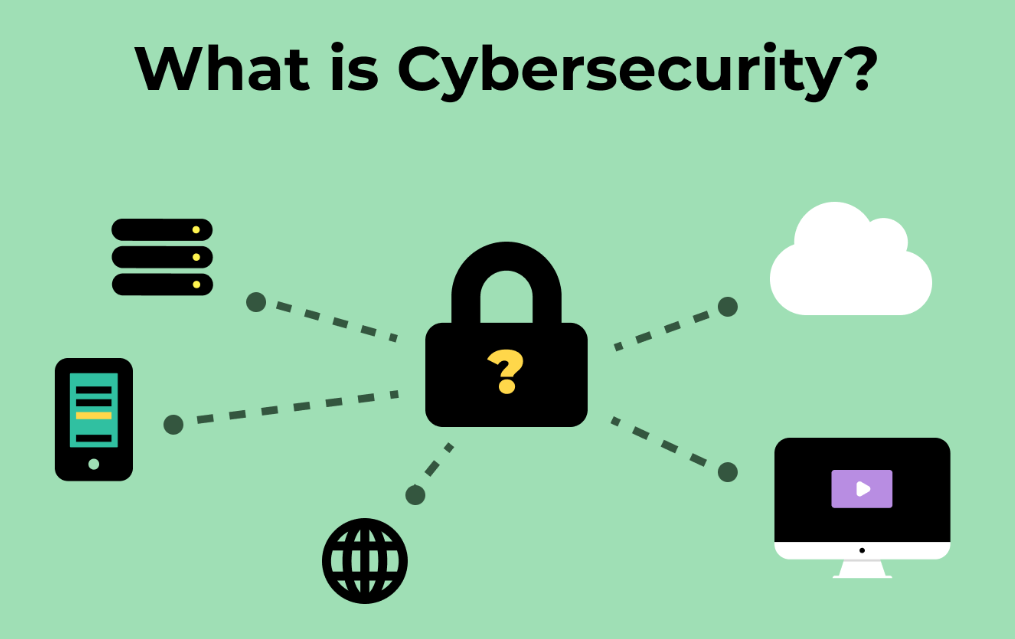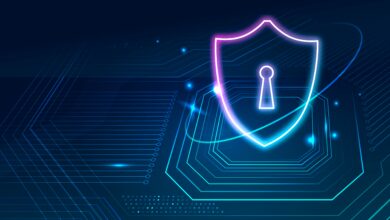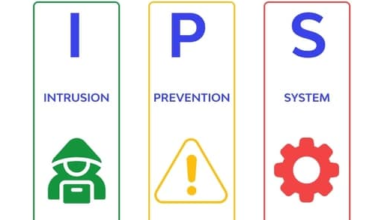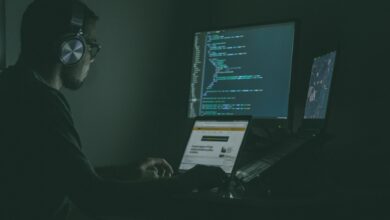What Is AI-Powered Cybersecurity

What if your cybersecurity could predict and prevent attacks before they even happen? AI-Powered Cybersecurity is transforming this once far-fetched idea into reality. In a digital landscape teeming with sophisticated threats, AI stands as the vanguard of defense, tirelessly scanning for vulnerabilities and adapting to emerging dangers. This isn’t just reactive protection—it’s intelligent, preemptive, and always one step ahead. As cybercriminals become more cunning, AI ensures your defenses remain unyielding. Ready to explore how AI-Powered Cybersecurity is reshaping the way we secure our digital world? The future of cybersecurity is here, and it’s smarter than ever.
Table of Contents
What is AI?

Artificial Intelligence (AI) is the simulation of human intelligence by machines, enabling them to perform tasks that typically require cognitive abilities such as reasoning, learning, and decision-making. At its core, AI utilizes algorithms to process vast amounts of data, identify patterns, and make informed predictions or decisions. From automating mundane tasks to solving complex problems, AI’s potential is vast. When applied to AI-Powered Cybersecurity, its capabilities extend even further. By learning from historical data, AI can detect and respond to cyber threats in real time, offering proactive protection against increasingly sophisticated attacks. It’s an intelligent system that evolves, adapts, and secures.
What is Cybersecurity?

Cybersecurity is the practice of defending computers, networks, and data from digital attacks, unauthorized access, and damage. In today’s interconnected world, where personal, financial, and business data flow across global networks, cybersecurity has become paramount. The threats it addresses range from viruses and phishing scams to sophisticated cyber-espionage and ransomware. As attackers grow more cunning, traditional security measures are no longer enough. This is where AI-Powered Cybersecurity comes into play. By integrating artificial intelligence, cybersecurity systems can predict, identify, and neutralize potential threats in real-time, staying ahead of malicious actors. AI enhances both detection and response, ensuring a more resilient digital ecosystem.
In the realm of modern threats, AI-Powered Cybersecurity stands as the vanguard, transforming the way organizations defend their digital landscapes.
AI in Cybersecurity
AI in cybersecurity signifies a transformative shift in how organizations defend against digital threats. By harnessing the power of artificial intelligence, cybersecurity systems can analyze vast volumes of data at lightning speed, identifying anomalies that could indicate potential breaches. This level of scrutiny surpasses human capabilities, allowing for real-time threat detection and response. AI-Powered Cybersecurity employs machine learning algorithms to adapt and evolve, learning from each attack to bolster defenses against future intrusions.
With predictive analytics, AI can anticipate vulnerabilities before they are exploited, turning the tide in the battle against cybercrime. As organizations face increasingly sophisticated threats, the integration of AI becomes not just beneficial, but essential for maintaining robust security in a complex digital landscape. Through the implementation of AI-Powered Cybersecurity, businesses can achieve a proactive stance, ensuring their critical assets remain protected in an ever-evolving threat environment.
How Is AI Cybersecurity Different?
| Aspect | AI Cybersecurity | Traditional Cybersecurity |
| Threat Detection | Proactive, analyzes real-time data to identify threats before they occur. | Reactive, relies on predefined rules and historical data to respond after an attack. |
| Adaptability | Utilizes machine learning to continuously improve and adapt to new threats. | Static systems that often require manual updates and adjustments. |
| Response Automation | Automates threat responses, enabling immediate action without human intervention. | Manual response often involves significant human oversight, leading to delays. |
| False Positives | Reduces false positives through advanced algorithms that better differentiate threats from benign activity. | High volume of false positives that can overwhelm security teams and hinder efficiency. |
| Data Analysis | Analyzes vast amounts of structured and unstructured data from multiple sources for deeper insights. | Limited data analysis capabilities, often focused on specific logs or predefined parameters. |
| Behavioral Analysis | Monitors user behavior to establish baselines, detecting anomalies indicative of insider threats or compromised accounts. | Lacks comprehensive behavioral monitoring, potentially missing subtle indicators of malicious activity. |
Why Is AI in Cybersecurity Important?
- Rapid Threat Detection: Cyber threats evolve at an alarming pace. AI technologies can analyze vast amounts of data and identify anomalies in real time, allowing organizations to detect and respond to potential breaches faster than traditional methods.
- Proactive Defense: AI enables a proactive rather than reactive approach to cybersecurity. By predicting vulnerabilities and understanding attack patterns, AI systems can preemptively block threats before they manifest, significantly reducing the risk of data breaches.
- Enhanced Efficiency: Cybersecurity teams often face overwhelming volumes of alerts and data. AI automates routine tasks, such as threat analysis and incident response, allowing security professionals to focus on more complex issues and strategic planning. This improves overall operational efficiency.
- Adaptive Learning: AI systems leverage machine learning to adapt and evolve in response to new threats. They continuously learn from past incidents, refining their algorithms to recognize new attack vectors and emerging tactics employed by cybercriminals.
- Reduction of Human Error: Human error is a common vulnerability in cybersecurity. AI can help mitigate this risk by providing automated solutions and insights, reducing the likelihood of oversight or misjudgment in threat detection and response.
- Scalability: As organizations grow, so do their cybersecurity needs. AI can scale to meet increasing demands without requiring a proportional increase in human resources. This scalability is essential for businesses operating in dynamic environments.
- Cost Efficiency: By reducing the incidence of breaches and the associated costs of recovery, AI-powered solutions can ultimately lower the total cost of ownership for cybersecurity. Organizations can save on fines, legal fees, and reputational damage stemming from data breaches.
- Real-Time Insights: AI provides organizations with actionable insights into their security posture. By continuously monitoring systems and analyzing data, AI offers real-time intelligence that helps inform strategic decision-making.
What Are the Benefits of AI in Cybersecurity?
- Enhanced Threat Detection: AI utilizes machine learning algorithms to analyze vast datasets, identifying unusual patterns that indicate potential attacks in real time. This capability drastically reduces response times and helps mitigate threats before they escalate.
- Automation of Routine Tasks: By automating repetitive monitoring and data analysis, AI streamlines security operations. This allows cybersecurity professionals to focus on complex challenges, improving overall efficiency and effectiveness.
- Minimized Human Error: Automation reduces the likelihood of mistakes that can occur in manual processes, addressing one of the most common vulnerabilities in traditional security frameworks.
- Predictive Capabilities: AI analyzes historical data and threat intelligence to anticipate future attack vectors. This proactive approach enables organizations to strengthen their defenses before threats materialize.
- Scalability: As organizations grow, AI can adapt to increased data volumes and complexities without compromising performance. This scalability is essential for maintaining robust cybersecurity in dynamic environments.
- Improved Incident Response: AI enables faster identification and categorization of security incidents, facilitating swift and informed responses, ultimately minimizing damage and recovery time.
- Real-Time Insights: AI provides actionable intelligence, continuously monitoring systems and analyzing data, which helps inform strategic decision-making and enhances overall security posture.
Embracing AI-Powered Cybersecurity is not just a strategy; it’s a commitment to evolving defense mechanisms against increasingly sophisticated cyber threats.
What is Machine Learning (ML)?
Machine Learning (ML) is a dynamic branch of artificial intelligence that empowers systems to learn from data and improve autonomously over time. By utilizing sophisticated algorithms, ML identifies patterns and makes predictions, facilitating informed decision-making. In the context of AI-Powered Cybersecurity, ML is instrumental in enhancing threat detection and response. It analyzes vast amounts of data to uncover anomalies that may signify cyber threats, allowing organizations to act preemptively. As cybercriminals continually refine their tactics, the adaptability of ML ensures that AI-Powered Cybersecurity solutions evolve, providing robust protection against an increasingly complex threat landscape.
What Are Deep Neural Networks?
Deep Neural Networks (DNNs) are a sophisticated class of machine learning models inspired by the human brain’s architecture. Comprising multiple layers of interconnected nodes, DNNs excel at processing vast amounts of data to identify intricate patterns and relationships. This capability makes them particularly valuable in applications such as image recognition, natural language processing, and AI-Powered Cybersecurity. In the realm of cybersecurity, DNNs can analyze vast datasets to detect subtle anomalies indicative of potential threats. Their ability to learn from complex data enables AI-Powered Cybersecurity solutions to adapt and evolve, offering enhanced protection against increasingly sophisticated cyberattacks.
What Are the Risks of AI in Cybersecurity?
The integration of AI in cybersecurity offers substantial benefits, yet it also introduces several risks that organizations must navigate carefully. Here are some key risks associated with AI-Powered Cybersecurity:
- Bias in Algorithms: AI systems are only as good as the data they are trained on. If this data is biased or unrepresentative, the resulting algorithms may produce skewed outcomes, leading to inaccurate threat detection.
- Over-Reliance on Automation: While automation enhances efficiency, excessive reliance on AI can diminish human oversight. This may result in delayed responses to sophisticated attacks that require nuanced judgment.
- Adversarial Attacks: Cybercriminals can exploit vulnerabilities in AI systems, using techniques like adversarial machine learning to manipulate models and evade detection, rendering AI-Powered Cybersecurity less effective.
- Data Privacy Concerns: The vast amounts of data processed by AI systems may include sensitive information. Mishandling or inadequate protection of this data can lead to significant privacy breaches.
- Complexity of Integration: Implementing AI solutions into existing cybersecurity frameworks can be challenging. Misalignment between technologies may create new vulnerabilities, complicating security measures.
What Kind of Skills Are Required to Implement AI in Cybersecurity?
1- Data Science and Analytics
Data Science and Analytics is an interdisciplinary field that utilizes statistical methods, algorithms, and computational techniques to extract meaningful insights from complex datasets. It encompasses data collection, cleaning, and analysis, transforming raw data into actionable intelligence. In the context of AI-Powered Cybersecurity, Data Science plays a pivotal role by enabling organizations to identify patterns and anomalies indicative of cyber threats. This analytical prowess facilitates the development of predictive models, which enhance threat detection and response strategies. By leveraging advanced analytics, businesses can make informed decisions, fortifying their defenses against increasingly sophisticated cyberattacks while optimizing resource allocation and improving overall security posture.
2- Machine Learning Expertise
Machine Learning Expertise encompasses a deep understanding of algorithms that enable systems to learn and improve from data over time. This field requires proficiency in various techniques, including supervised, unsupervised, and reinforcement learning, each tailored to different problem domains. In the realm of AI-Powered Cybersecurity, Machine Learning is vital for detecting and responding to sophisticated cyber threats. By analyzing vast amounts of data, machine learning models can identify patterns and anomalies that signal potential attacks. This expertise not only enhances threat detection but also empowers organizations to create adaptive security measures that evolve with emerging threats, ensuring robust protection in an increasingly complex landscape.
3- Programming Skills
Programming Skills are fundamental in today’s technology-driven landscape, particularly in the context of AI-Powered Cybersecurity. Proficiency in languages such as Python, R, and Java allows cybersecurity professionals to develop and implement sophisticated algorithms and automation tools. These skills enable the creation of models that analyze vast datasets, facilitating real-time threat detection and response. Moreover, understanding coding practices enhances the ability to integrate machine learning frameworks and security protocols seamlessly. As cyber threats become increasingly complex, robust programming skills empower professionals to devise innovative solutions that bolster security measures, ensuring organizations remain resilient against potential breaches.
4- Cybersecurity Knowledge
Cybersecurity Knowledge encompasses an understanding of the principles, practices, and technologies designed to protect information systems from cyber threats. It involves awareness of various security frameworks, threat landscapes, and risk management strategies. In the realm of AI-Powered Cybersecurity, this knowledge is paramount. Professionals must grasp how artificial intelligence can enhance threat detection, automate responses, and predict potential vulnerabilities. Familiarity with concepts such as encryption, intrusion detection systems, and incident response protocols is crucial for effectively safeguarding digital assets. As the cyber threat landscape evolves, a strong foundation in cybersecurity ensures that organizations can leverage AI capabilities to create robust and adaptive defenses against malicious attacks.
5- Domain Knowledge
Domain Knowledge refers to the specialized understanding of a specific industry or field, crucial for effectively implementing strategies and solutions. In AI-Powered Cybersecurity, this knowledge encompasses awareness of unique threats, regulatory requirements, and operational challenges that different sectors face. For instance, financial institutions require stringent security measures due to sensitive data, while healthcare organizations must comply with HIPAA regulations. Possessing deep domain knowledge enables professionals to tailor AI solutions that address specific vulnerabilities, ensuring compliance and enhancing security protocols. This expertise allows for the development of nuanced strategies that protect critical assets while mitigating risks unique to each industry’s environment.
6- Problem-Solving Skills
Problem-Solving Skills are essential in navigating the complex landscape of AI-Powered Cybersecurity. These skills encompass analytical thinking, creativity, and a strategic approach to identifying and addressing challenges. In the face of evolving cyber threats, professionals must evaluate potential vulnerabilities and devise innovative solutions swiftly. This may involve applying machine learning algorithms to recognize anomalous behaviors or crafting robust incident response plans. Moreover, effective problem solvers can synthesize information from diverse sources, fostering collaboration across teams. The ability to anticipate challenges and implement proactive measures is crucial for fortifying defenses, ensuring organizations remain resilient against increasingly sophisticated cyber attacks.
With AI-Powered Cybersecurity, we unlock the potential for proactive defense, turning data into actionable insights that safeguard our most critical assets.
Conclusion
In conclusion, AI-Powered Cybersecurity represents a transformative evolution in the defense against cyber threats. By harnessing the capabilities of artificial intelligence, organizations can enhance their security posture and proactively mitigate risks. The integration of advanced analytics, machine learning, and robust programming skills allows for the rapid identification of vulnerabilities and the formulation of adaptive strategies. As cyber threats become increasingly sophisticated, the importance of a multidisciplinary approach—combining cybersecurity knowledge, domain expertise, and problem-solving skills—cannot be overstated. Embracing these technologies and methodologies ensures that businesses are well-equipped to navigate the complex and dynamic landscape of cybersecurity, safeguarding their critical assets and maintaining operational integrity.
FAQ on AI-Powered Cybersecurity
- What is AI-Powered Cybersecurity?
AI-Powered Cybersecurity refers to the use of artificial intelligence technologies to enhance the detection, prevention, and response to cyber threats, enabling more effective security measures. - How does AI improve cybersecurity measures?
AI improves cybersecurity by analyzing vast amounts of data to identify patterns, predict threats, and automate responses, making security systems more efficient and responsive. - What are the key benefits of AI-Powered Cybersecurity?
The key benefits include enhanced threat detection, faster response times, reduced human error, and the ability to adapt to evolving threats through machine learning. - What skills are required for implementing AI-Powered Cybersecurity?
Skills required include programming expertise, knowledge of machine learning algorithms, strong problem-solving abilities, and an understanding of cybersecurity principles. - What industries can benefit from AI-Powered Cybersecurity?
Industries such as finance, healthcare, and technology can greatly benefit from AI-Powered Cybersecurity due to the sensitive nature of their data and the high risks associated with cyber threats. - What are the potential risks of AI in cybersecurity?
Potential risks include algorithmic bias, over-reliance on automated systems, and the possibility of AI systems being exploited by malicious actors.





I truly appreciate your technique of writing a blog. I added it to my bookmark site list and will
Pretty! This has been a really wonderful post. Many thanks for providing these details.
I like the efforts you have put in this, regards for all the great content.
I appreciate you sharing this blog post. Thanks Again. Cool.